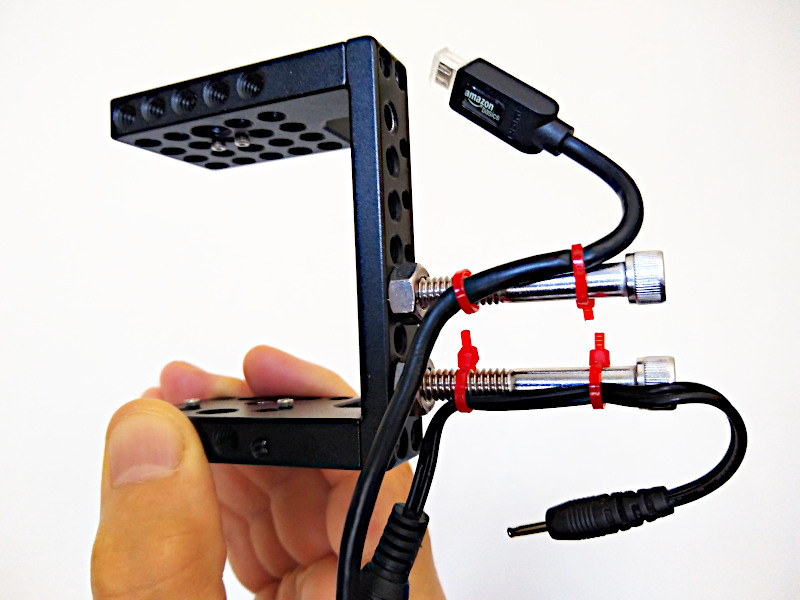-
Posts
1,151 -
Joined
-
Last visited
About tupp

Profile Information
-
Gender
Male
-
Location
Los Angeles
Recent Profile Visitors
13,732 profile views
tupp's Achievements

Long-time member (5/5)
574
Reputation
-
 kaylee reacted to a post in a topic:
How come expensive camera's look so much better?
kaylee reacted to a post in a topic:
How come expensive camera's look so much better?
-
Kendy Ty and his T2i?
-
 tupp reacted to a post in a topic:
How come expensive camera's look so much better?
tupp reacted to a post in a topic:
How come expensive camera's look so much better?
-
The design DNA of the OM-3 seems to flow from the OM-1 SLR of the 1970's:
-
Micro Four Nerds video:
-
 PannySVHS reacted to a post in a topic:
Deciding closest modern camera to Digital Bolex look
PannySVHS reacted to a post in a topic:
Deciding closest modern camera to Digital Bolex look
-
Rossmann made three recent videos:
-
 mercer reacted to a post in a topic:
I bought a Pentax K-1
mercer reacted to a post in a topic:
I bought a Pentax K-1
-
 kaylee reacted to a post in a topic:
How do i key a teal puppet?
kaylee reacted to a post in a topic:
How do i key a teal puppet?
-
With a dark teal subject, it should be possible to remove a key green or a key blue background. Many digital keyers come with parametric filters that allows selection of a precise keying range in regards to hue, saturation and luminance. Of course, the same parametric controls can be used to key out other colors than key green or key blue. If your camera can be locked down, you could use a difference mask. In this method, one shoots the background without subject, and, then, with the camera still locked down, the subject is shot in front of the background. The difference mask then keys out any part of the image that is identical in both videos. So, the unobstructed background becomes transparent. Here is a video that shows a few other possible keying techniques using After Effects:
-
 PannySVHS reacted to a post in a topic:
I bought a Pentax K-1
PannySVHS reacted to a post in a topic:
I bought a Pentax K-1
-
 filmmakereu reacted to a post in a topic:
Is the EOS-M *THE* Digital Super-8 Camera?
filmmakereu reacted to a post in a topic:
Is the EOS-M *THE* Digital Super-8 Camera?
-
Ricoh just announced a monochrome version of the Pentax K-3 Mark III DSLR. Evidently, it is 25.73MP, and it shoots up to 4K 30P video. Here is a video showing footage and stills from the camera.
-
 Davide DB reacted to a post in a topic:
Setting Up AgX On DaVinci Resolve
Davide DB reacted to a post in a topic:
Setting Up AgX On DaVinci Resolve
-
Here is a video showing ways to install and use AgX in Resolve: It's free and open source. The way it attenuates saturation in the highlights is similar to what Arri does in-camera (and similar to film emulsion). I think that AgX additionally reduces saturation in the shadows. If you have suffered "rat piss yellow" and "nuclear cyan" in the brighter/highlight areas, it might be good to try AgX. After using the related Filmic RGB module in Darktable, I want to go back and regrade all my images with AgX/Filmic.
-
 tupp reacted to a post in a topic:
Deciding closest modern camera to Digital Bolex look
tupp reacted to a post in a topic:
Deciding closest modern camera to Digital Bolex look
-

Deciding closest modern camera to Digital Bolex look
tupp replied to Andrew - EOSHD's topic in Cameras
Cinemarting achieved first light from an 8K cinema camera in a relatively short time, and within ten months of that milestone they had self-contained, working prototypes. Some would say that such accelerated steps ("strides") were remarkable ("impressive"). One can almost hear the echoes of snickering coming from a junior high school classroom. Glad that we can all laugh at jokes that avoid personal digs. Keep 'em coming! Actually, I would say that "impressive strides" sounds less like an Austin Powers 1960's Carnaby Street shop and more like the extraordinary accomplishments from someone who creates wireless camera accessories and camera apps (in addition to those who create cinema cameras). -
 tupp reacted to a post in a topic:
Deciding closest modern camera to Digital Bolex look
tupp reacted to a post in a topic:
Deciding closest modern camera to Digital Bolex look
-

Deciding closest modern camera to Digital Bolex look
tupp replied to Andrew - EOSHD's topic in Cameras
Not sure how one could come to such a notion from my post. I was responding to the latest episode in a long line of ridicule directed at a few intrepid individuals who took on the challenge of creating an 8K cinema camera -- and who actually achieved working prototypes. It's one thing to criticize the indomitable, powerful giants such as Canon, Sony, Fuji, Blackmagic, etc., but it seems distasteful to pick on a couple of little guys with scarce resources making bold, impressive strides (regardless of their eccentricities). -
 tupp reacted to a post in a topic:
Deciding closest modern camera to Digital Bolex look
tupp reacted to a post in a topic:
Deciding closest modern camera to Digital Bolex look
-
 tupp reacted to a post in a topic:
Deciding closest modern camera to Digital Bolex look
tupp reacted to a post in a topic:
Deciding closest modern camera to Digital Bolex look
-
 tupp reacted to a post in a topic:
Deciding closest modern camera to Digital Bolex look
tupp reacted to a post in a topic:
Deciding closest modern camera to Digital Bolex look
-

Deciding closest modern camera to Digital Bolex look
tupp replied to Andrew - EOSHD's topic in Cameras
I was referring to the look of the D16 -- I wasn't referring to film emulation. When's dessert? Actually, "caked-on" color is a good way to describe the look from some CCD's (but not from all CCD's -- consider look of the striped CCD of the Pany-Genesis/Sony F35). That's a real funny joke. However, Cinemartin rapidly achieved working prototypes of a cinema camera. They preceded the Octopus camera (still in development, but which is discussed with interest in this very thread) by demonstrating the use of a similar (but earlier) Ximea sensor module in a cinema camera. What camera developments have you achieved? -
 tupp reacted to a post in a topic:
Deciding closest modern camera to Digital Bolex look
tupp reacted to a post in a topic:
Deciding closest modern camera to Digital Bolex look
-
 tupp reacted to a post in a topic:
Deciding closest modern camera to Digital Bolex look
tupp reacted to a post in a topic:
Deciding closest modern camera to Digital Bolex look
-
 tupp reacted to a post in a topic:
Deciding closest modern camera to Digital Bolex look
tupp reacted to a post in a topic:
Deciding closest modern camera to Digital Bolex look
-
 tupp reacted to a post in a topic:
Deciding closest modern camera to Digital Bolex look
tupp reacted to a post in a topic:
Deciding closest modern camera to Digital Bolex look
-

Deciding closest modern camera to Digital Bolex look
tupp replied to Andrew - EOSHD's topic in Cameras
Global shutter and S16 optics are significant to the look of the D16. -
 kaylee reacted to a post in a topic:
Thoughts about WB calibration across different cameras
kaylee reacted to a post in a topic:
Thoughts about WB calibration across different cameras
-
 Ty Harper reacted to a post in a topic:
Thoughts about WB calibration across different cameras
Ty Harper reacted to a post in a topic:
Thoughts about WB calibration across different cameras
-
I don't know which method is more "accurate" in matching the cameras to the reading on your meter or in matching the cameras to each other. I would guess that the difference is minor, but it would be interesting to see a comparison of the two methods. I know that merely using the custom white balance on each camera without a color meter will get a close enough color temp match, and it is quick, easy and consistent. Either way, you will still be tweaking sliders (or clicking eyedroppers) in post to get the final correction. By the way, it is generally a good idea to avoid mixing light sources of different colors on the same side of the subject, especially on a person's face. Also, you might try leaving a slight difference between the color temperature of the exterior light and that of the interior lights. I usually keep the interior key light neutral. If a window is visible in frame and if only skylight is streaming through it, I tend to keep it around 1/4 CTB -1/2 CTB from neutral. If direct sunlight is visible in the background, I sometimes keep it at neutral -1/4 CTO.
-
 Ty Harper reacted to a post in a topic:
Thoughts about WB calibration across different cameras
Ty Harper reacted to a post in a topic:
Thoughts about WB calibration across different cameras
-
If you are doing a multi-camera shoot, first put the grey/white card and color chart together, lit by the dominant full-spectrum light source of the scene/event. Flag other light sources from hitting card and chart. To avoid glare, the light source should be at about 45 degrees (or less) to the plane formed by the card and chart. Position all the cameras side-by-side as close as possible to each other, about 6-8 feet directly in front of the card and chart, and perform a custom white balance on each camera. Then, record about five seconds of footage of the card and chart with each camera. If the dominant light source of the scene/event is intentionally not full-spectrum, perform the above procedure using a separate full spectrum source with a color balance that is close to color of the dominant source of the event/scene. If you are shooting at separate times/locations with each camera (not a multi-camera session), do the same procedure above at each time/location with the one camera. Of course, if you are shooting raw, the white balance will not affect the captured image, but having a custom white balance should provide a decent starting point for your NLE and for color grading software. The footage of the charts will help in more finely "dialing-in" the color correction in post.







